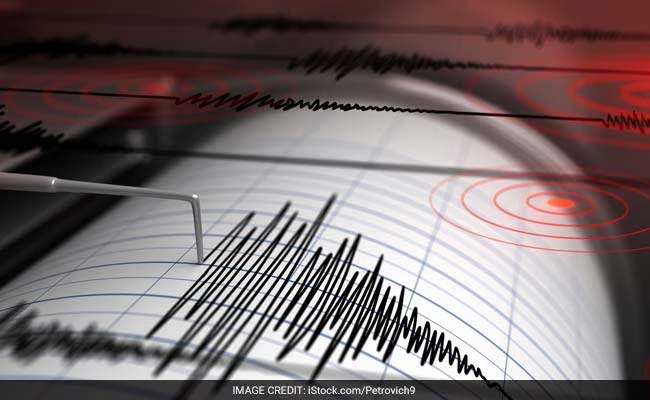
A 6.1-magnitude earthquake jolted the Japanese capital Tokyo and surrounding areas Thursday evening, reportedly injuring more than 20 people, but the Japan Meteorological Agency said there was no tsunami risk.
The quake sent buildings swaying, stranded commuters, knocked products off store shelves and triggered emergency warnings blaring from the phones of local residents, intended to give them time to take shelter.
Initial information from the JMA put the epicentre of the quake in Chiba prefecture, east of Tokyo, and said it struck at 10:41pm (1341 GMT) with a depth of 80 kilometres. No tsunami alert was issued.
The US Geological Survey (USGS) put the quake's strength at magnitude 5.9 with a depth of 61 kilometres.
It was one of the strongest temblors to rock Tokyo since the massive 9.0 earthquake and tsunami disaster in 2011 that killed thousands.
Some bullet and local train services were halted as a precaution after the quake. People in Tokyo were seen waiting early Friday in the Shinagawa station during the suspension of service, while others lined up at taxi stands seeking alternate transportation.
Police and fire authorities said more than 20 people were injured, including a passenger who hit her head when a train came to a sudden halt, according to the Kyodo news agency.
Checks were conducted at regional nuclear plants, and Kyodo said Chief Cabinet Secretary Hirokazu Matsuno confirmed there were no abnormalities reported at the facilities.
Several hundred Tokyo homes were also reportedly left without power after the earthquake struck, and Tokyo Fire Department personnel scrambled to fix burst water pipes in the city.
The quake was relatively strong compared to recent quakes in Tokyo, which like much of Japan regularly experiences seismic activity.
Newly elected Prime Minister Fumio Kishida, who took office just three days before the quake, in a tweet urged residents to "please take action to save lives while checking the latest information."
Kishida's government reportedly has set up a crisis management center to assess the damage and provide support where needed.
Japan sits on the Pacific "Ring of Fire", an arc of intense seismic activity that stretches through Southeast Asia and across the Pacific basin.
Early on Friday a 5.6-magnitude quake rattled northwestern Myanmar, with the USGS registering the depth at 114 kilometers. There were no immediate reports of casualties or damage.
Last week, a 6.1-magnitude earthquake struck off Japan's northwestern coast, causing no damage.
The country is regularly hit by quakes, and has strict construction regulations intended to ensure buildings can withstand strong tremors.
But it remains haunted by the memory of the March 11, 2011 undersea quake that triggered a deadly tsunami and unleashed the Fukushima nuclear accident.
The tsunami left some 18,500 dead or missing.
Track Latest News Live on NDTV.com and get news updates from India and around the world

